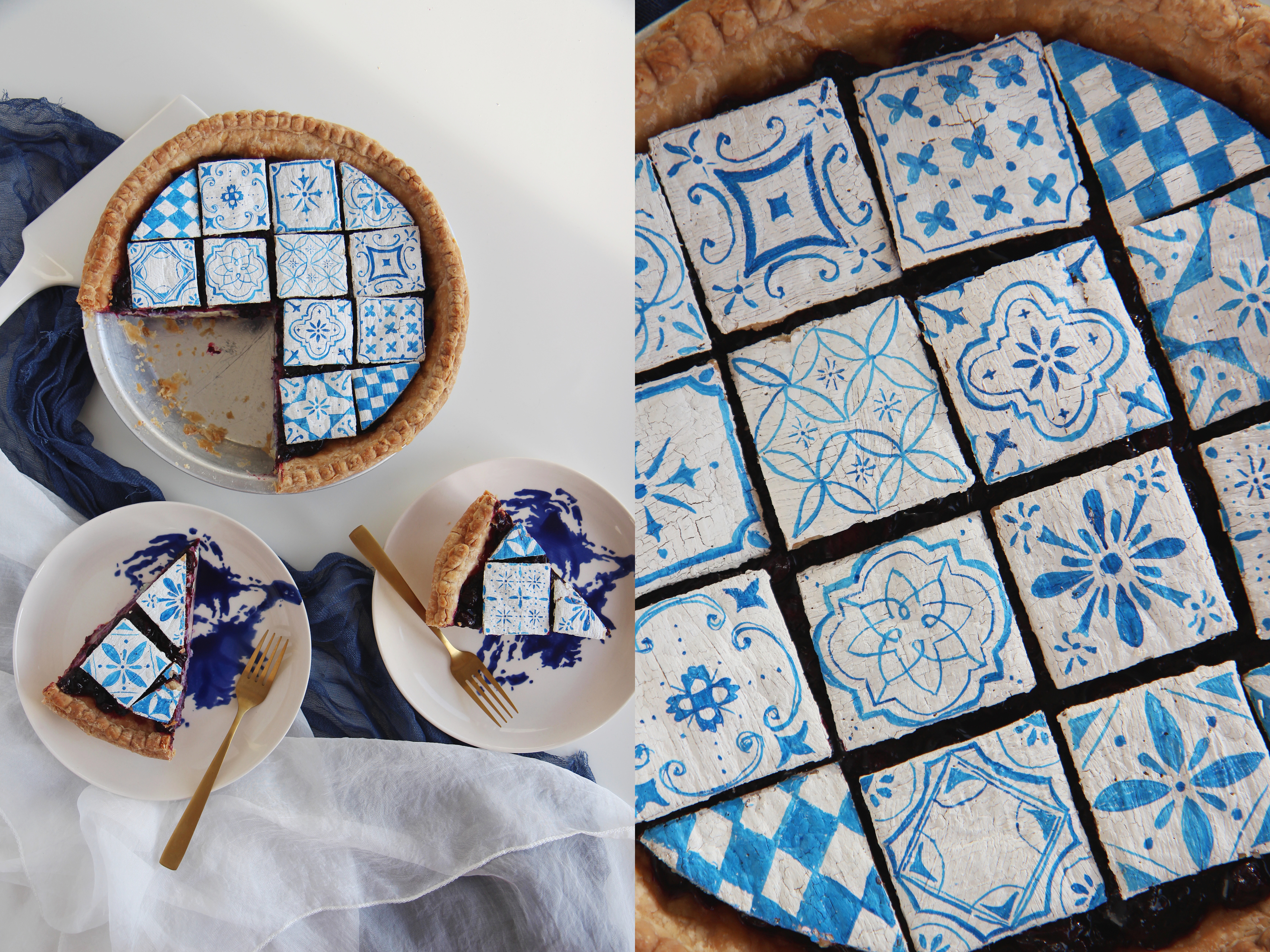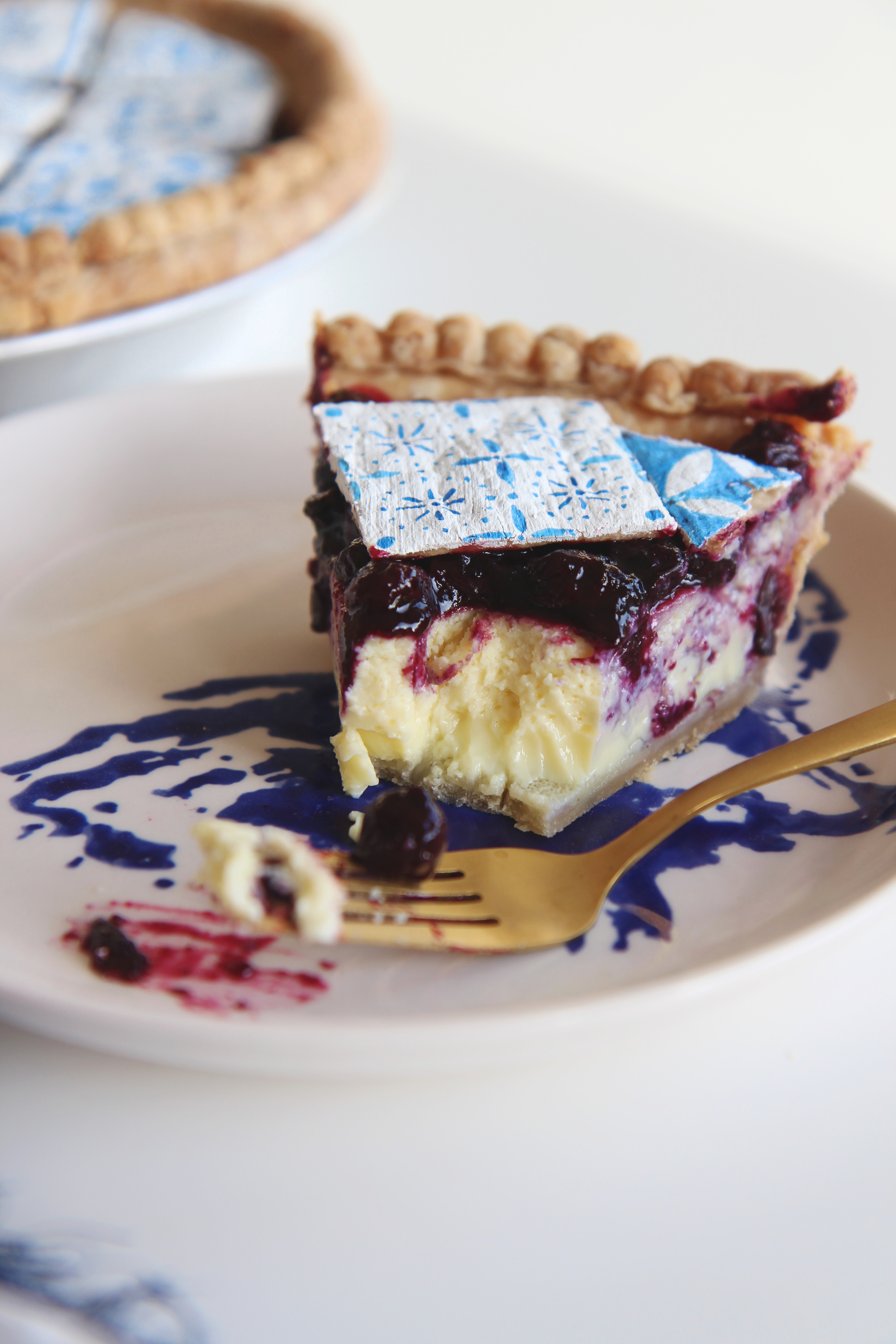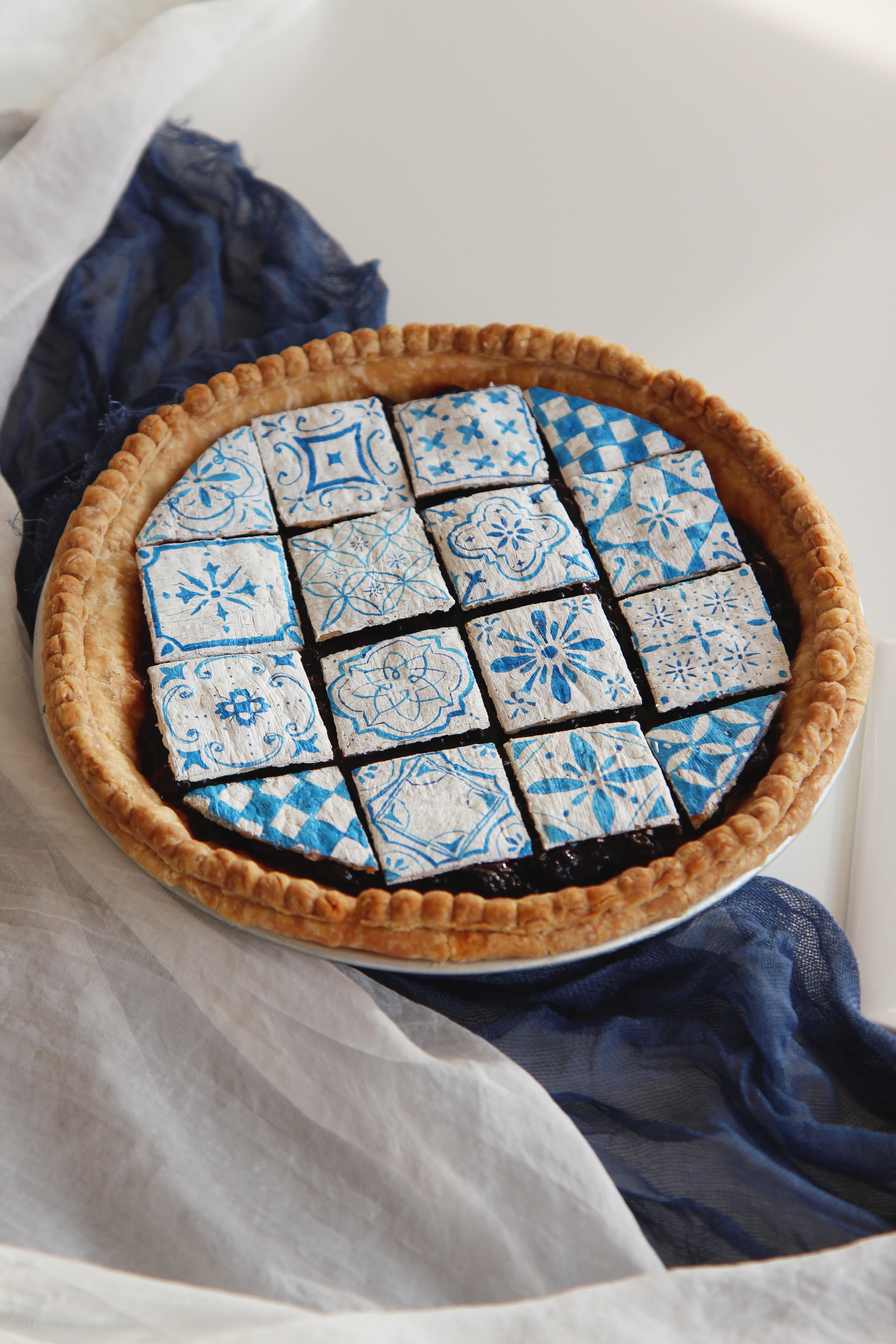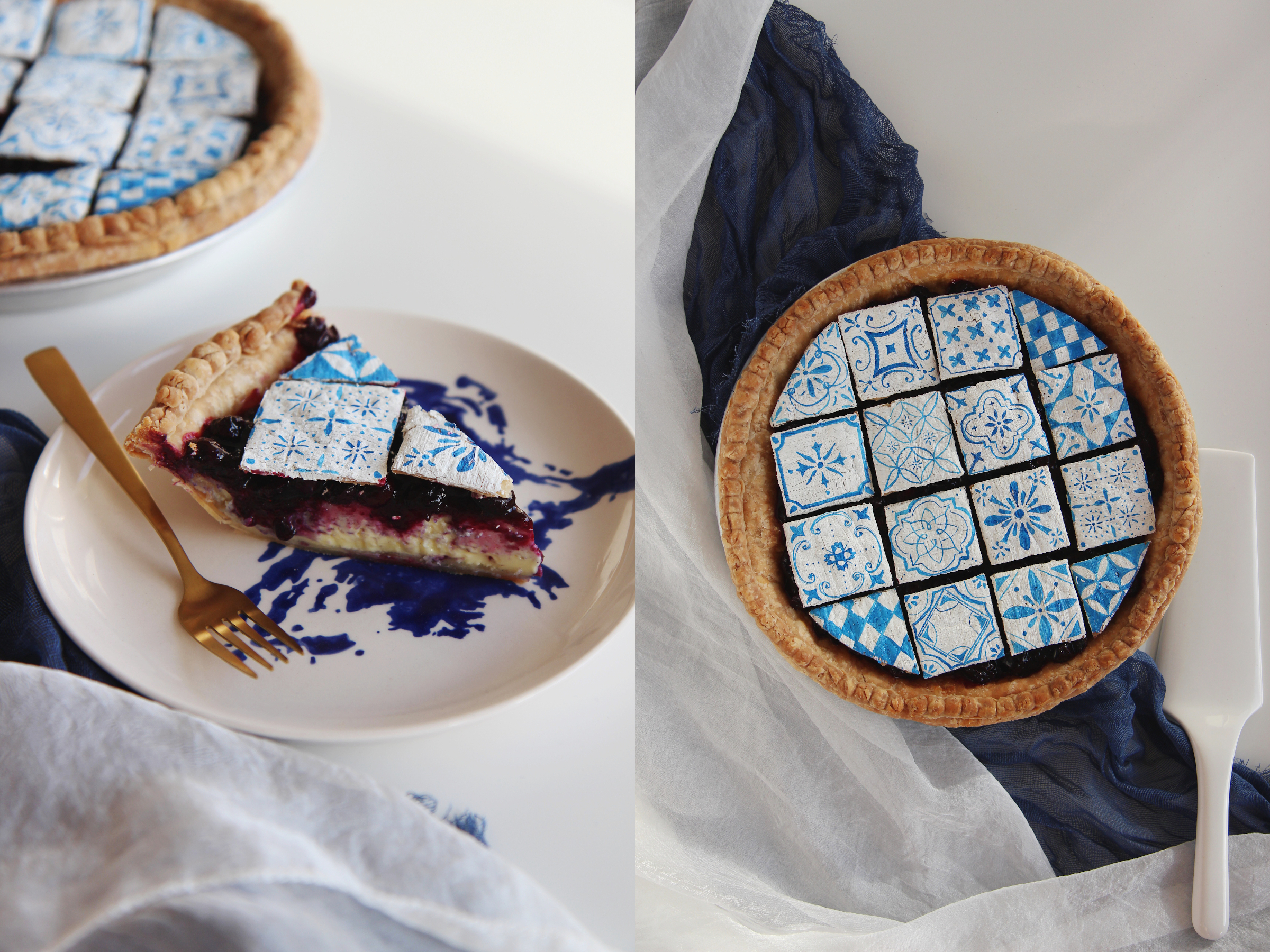
Humans are divided into different clans and tribes, and belong to countries and towns. But I find myself a stranger to all communities and belong to no settlement.
The universe is my country and the human family is my tribe.
—Khalil Gibran
The intricate tiles of Portugal never fail to captivate me when I am visiting. Every time I pass a particularly remarkable tiled building you can be sure I am taking a photograph (my mom does this exact thing, too, because our brains run on the same hamster wheel).
They are such a unique and ubiquitous feature of the country.
I learned that these tiles are actually derived from Moorish influence in the country, with the word originally being Arabic, azellij. The tiles became more common in the 13th century, during the Moorish invasion of Portugal. There is a fascinating story behind this art form stretching the centuries, with changes in the style and scenes as well as the popularity and utility (the tiles are not only used inside, but outside, too, where they have a role in temperature control).
You can read about them here, here, or here. And I sincerely hope you have the opportunity to see them in person if you so wish. It is such a special place to visit.
I feel so grateful to have been introduced to such a beautiful and rich history via my family. Visiting and learning and seeing my nieces grow up in a different culture is such a blessing.
The blending and sharing of culture has always felt particularly meaningful to me as a multiracial person, and it warms my heart to see the little ones experience it, too.
This pie for Pi Day draws inspiration from another remarkable example of shared cultural evolution and interpretation from Portugal: the pastel de nata.
One of the most pleasurable yet simple desserts that has endured for hundreds of years; there is nothing quite like a hot, fresh pastel when we are visiting Portugal.
The story goes that these tarts were created by monks at the Jerónimos Monastery, who used egg whites for laundry starching and thus had a surplus of egg yolks to use up in delicious pastries.
The pastry made its way to the East via trading ships and merchants, and there branched into several types of egg custard tart, including the Guangzhou, Hong Kong, and Macanese styles. England and the US also have their own version of custard tarts/pies, of course.
Here, a simple and smooth vanilla, nutmeg, and cinnamon filling rich with egg and cream is baked slowly on a parbaked all-butter crust until it is just set, which allows it to cool into a silky custard. A jammy blueberry-lemon compote is spooned over top to add brightness and freshness, and my little pie crust azulejos nestle in on top.
It is a pie-stel de nata… Sorry.
Pi day, previously:
2023: double chocolate almond pie
2022: Klimt klemon pie
2021: lime and coconut pie
2020: toasted black sesame pie
2019: black bottom cherry pie
2018: brown butter smoked salted honey pie
2017: vegan campfire pie
2016: brûléed citrus and lime pie
Pie, previously:
2023: squash pie
2018: plum and frangipane pie
2017: perfect peach pie
2016: pumpkin meringue tart
2015: apple, pear, butterscotch, and cheddar pie
2015: fig, rosemary, and lemon tart
2014: coconut buttermilk chess pie
2014: peach slab pie
2014: American pie
2013: Pumpkin spice brown butter chocolate pecan pie
Pie-stel de Nata (Custard Pie)
makes 1 9-inch pie
ingredients:
for the crust:
375 grams (3 cups plus 2 tablespoons) AP flour
15 grams (1 tablespoon) sugar
1 teaspoon sea salt
226 grams (16 tablespoons, 1 cup) butter, cold, in cubes
1/2 cup water mixed with 1 tablespoon rice wine vinegar (or sub any vinegar) and ice cubes
for the egg filling:
4 eggs
100 grams (1/2 cup) sugar
1/2 teaspoon salt
1 tablespoon vanilla bean paste
240 grams (1 cup) heavy cream
360 grams (1 1/2 cups) whole milk
1/4 teaspoon nutmeg
1/4 teaspoon cinnamon
for the blueberry-lemon jam:
2 pints blueberriers
zest of 1 lemon
juice of half a lemon
1/3 cup to 1/2 cup sugar, to taste
pinch salt
1 tablespoon cornstarch
directions:
Make the crust: whisk flour, salt, and sugar together.
Cut and mix the butter into the flour mixture until the largest piece is pea-sized.
Then pulse or cut the mixture a few more times, until the butter has become crumb-like but not sticky.
Sprinkle on the ice vinegar water 1 tablespoon at a time so that you can gather the dough into a cohesive mass.
Divide dough into two unequal disks: one that is ~2/3 of the dough and one that is 1/3 and refrigerate for at least 30 minutes.
Roll out the large disk into a 10 1/2 inch round and drape over the pie plate, crimping the edges, then dock with a fork and refrigerate.
Roll the other disk out and cut out shapes as desired; store in fridge before painting/decorating as desired.
Preheat oven to 350 degrees F.
Place parchment in the prepared crust, dock with fork, and weight with pie weights (I use dried beans).
Place on a baking sheet and bake until puffed and very lightly golden, about 15 minutes.
Meanwhile, make the filling: whisk all ingredients together until homogenous, then stir gently to break up any large bubbles on the surface.
Pour into par-baked crust and bake for 45 minutes to 55 minutes, until slightly jiggly in the center.
Allow to cool completely.
Make the blueberry jam: stir all ingredients together over medium heat and cook until jammy.
Top the cooled pie with fully cooled jam, then add your tiles as desired.





March 15, 2024 at 7:27 am
Wow! Just beautiful, as always, and I just might make it!
See you in Chicago?! Xo
Tina
April 1, 2024 at 1:30 pm
I’ve been making your matcha butter cake for years and it still gets rave reviews every time ❤️
What did you use to paint your tiles?
March 14, 2025 at 11:58 pm
[…] day, previously: 2024: pie-stel de nata 2023: double chocolate almond pie 2022: Klimt klemon pie 2021: lime and coconut pie 2020: toasted […]